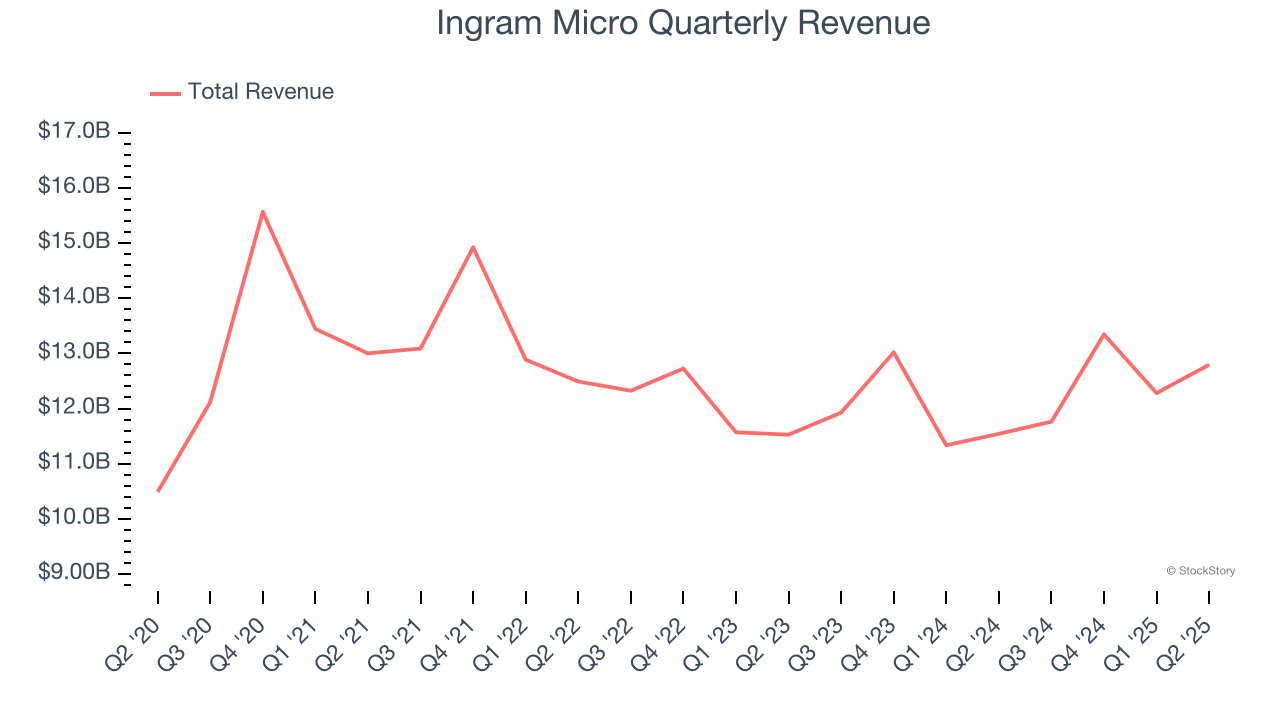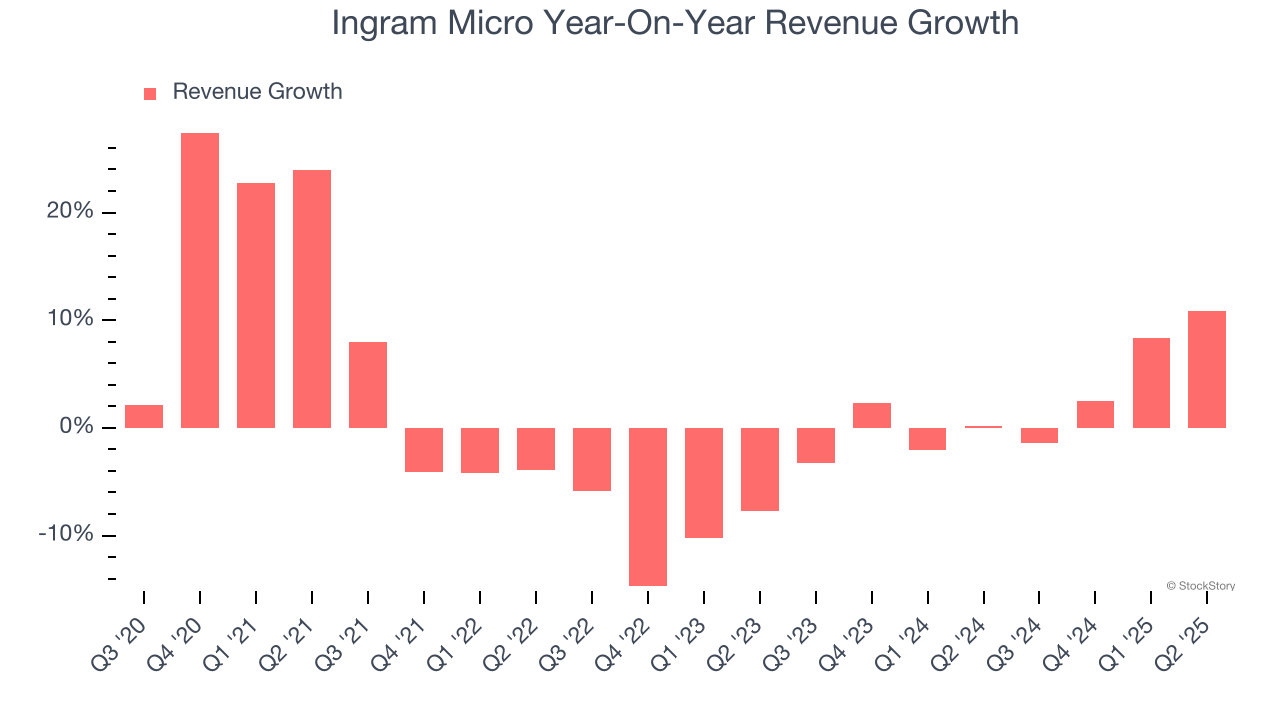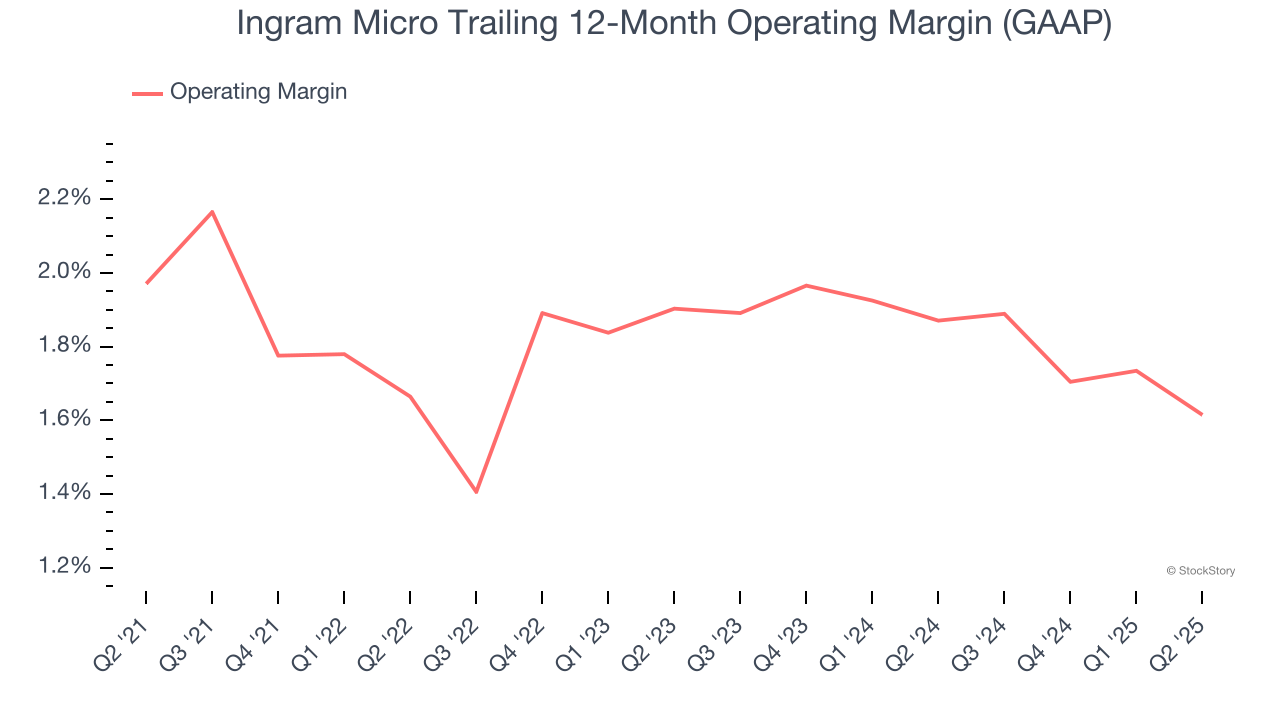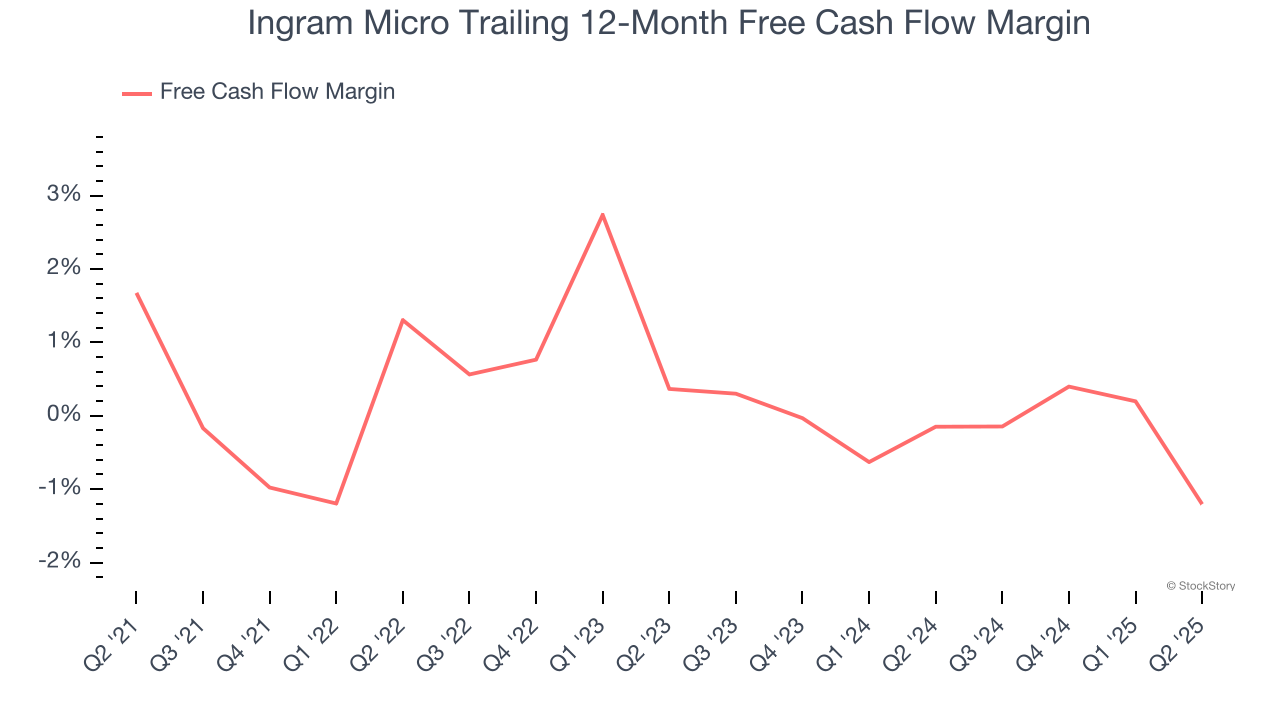
IT distribution giant Ingram Micro (NYSE: INGM) reported revenue ahead of Wall Street’s expectations in Q2 CY2025, with sales up 10.9% year on year to $12.79 billion. On the other hand, next quarter’s revenue guidance of $12.13 billion was less impressive, coming in 1.1% below analysts’ estimates. Its GAAP profit of $0.16 per share was 60.3% below analysts’ consensus estimates.
Is now the time to buy Ingram Micro? Find out by accessing our full research report, it’s free.
Ingram Micro (INGM) Q2 CY2025 Highlights:
- Revenue: $12.79 billion vs analyst estimates of $12.02 billion (10.9% year-on-year growth, 6.4% beat)
- EPS (GAAP): $0.16 vs analyst expectations of $0.40 (60.3% miss)
- Adjusted EBITDA: $293.9 million vs analyst estimates of $296.7 million (2.3% margin, 0.9% miss)
- Revenue Guidance for Q3 CY2025 is $12.13 billion at the midpoint, below analyst estimates of $12.26 billion
- Operating Margin: 1.1%, in line with the same quarter last year
- Free Cash Flow was -$333.2 million, down from $368.1 million in the same quarter last year
- Market Capitalization: $4.43 billion
Company Overview
Operating as the crucial link in the global technology supply chain with a presence in 57 countries, Ingram Micro (NYSE: INGM) is a global technology distributor that connects manufacturers with resellers, providing hardware, software, cloud services, and logistics expertise.
Revenue Growth
A company’s long-term performance is an indicator of its overall quality. Any business can put up a good quarter or two, but many enduring ones grow for years.
With $50.18 billion in revenue over the past 12 months, Ingram Micro is a behemoth in the business services sector and benefits from economies of scale, giving it an edge in distribution. This also enables it to gain more leverage on its fixed costs than smaller competitors and the flexibility to offer lower prices. However, its scale is a double-edged sword because finding new avenues for growth becomes difficult when you already have a substantial market presence. To expand meaningfully, Ingram Micro likely needs to tweak its prices, innovate with new offerings, or enter new markets.
As you can see below, Ingram Micro’s 2% annualized revenue growth over the last five years was sluggish. This shows it failed to generate demand in any major way and is a rough starting point for our analysis.

We at StockStory place the most emphasis on long-term growth, but within business services, a half-decade historical view may miss recent innovations or disruptive industry trends. Ingram Micro’s annualized revenue growth of 2.1% over the last two years aligns with its five-year trend, suggesting its demand was consistently weak. 
This quarter, Ingram Micro reported year-on-year revenue growth of 10.9%, and its $12.79 billion of revenue exceeded Wall Street’s estimates by 6.4%. Company management is currently guiding for a 3.1% year-on-year increase in sales next quarter.
Looking further ahead, sell-side analysts expect revenue to grow 1.5% over the next 12 months, similar to its two-year rate. This projection is underwhelming and suggests its newer products and services will not accelerate its top-line performance yet.
Unless you’ve been living under a rock, it should be obvious by now that generative AI is going to have a huge impact on how large corporations do business. While Nvidia and AMD are trading close to all-time highs, we prefer a lesser-known (but still profitable) stock benefiting from the rise of AI. Click here to access our free report one of our favorites growth stories.
Operating Margin
Operating margin is a key measure of profitability. Think of it as net income - the bottom line - excluding the impact of taxes and interest on debt, which are less connected to business fundamentals.
Ingram Micro’s operating margin might fluctuated slightly over the last 12 months but has remained more or less the same, averaging 1.8% over the last five years. This profitability was inadequate for a business services business and caused by its suboptimal cost structure.
Analyzing the trend in its profitability, Ingram Micro’s operating margin might fluctuated slightly but has generally stayed the same over the last five years. This raises questions about the company’s expense base because its revenue growth should have given it leverage on its fixed costs, resulting in better economies of scale and profitability.

This quarter, Ingram Micro generated an operating margin profit margin of 1.1%, in line with the same quarter last year. This indicates the company’s overall cost structure has been relatively stable.
Cash Is King
Although earnings are undoubtedly valuable for assessing company performance, we believe cash is king because you can’t use accounting profits to pay the bills.
Ingram Micro broke even from a free cash flow perspective over the last five years, giving the company limited opportunities to return capital to shareholders.
Taking a step back, we can see that Ingram Micro’s margin dropped by 2.9 percentage points during that time. Almost any movement in the wrong direction is undesirable because of its already low cash conversion. If the trend continues, it could signal it’s becoming a more capital-intensive business.

Ingram Micro burned through $333.2 million of cash in Q2, equivalent to a negative 2.6% margin. The company’s cash flow turned negative after being positive in the same quarter last year, suggesting its historical struggles have dragged on.
Key Takeaways from Ingram Micro’s Q2 Results
We liked that Ingram Micro beat analysts’ revenue expectations this quarter. On the other hand, its EPS missed and its revenue guidance for next quarter fell slightly short of Wall Street’s estimates. Overall, this was a weaker quarter. The stock remained flat at $18.88 immediately following the results.
Big picture, is Ingram Micro a buy here and now? We think that the latest quarter is only one piece of the longer-term business quality puzzle. Quality, when combined with valuation, can help determine if the stock is a buy. We cover that in our actionable full research report which you can read here, it’s free.






